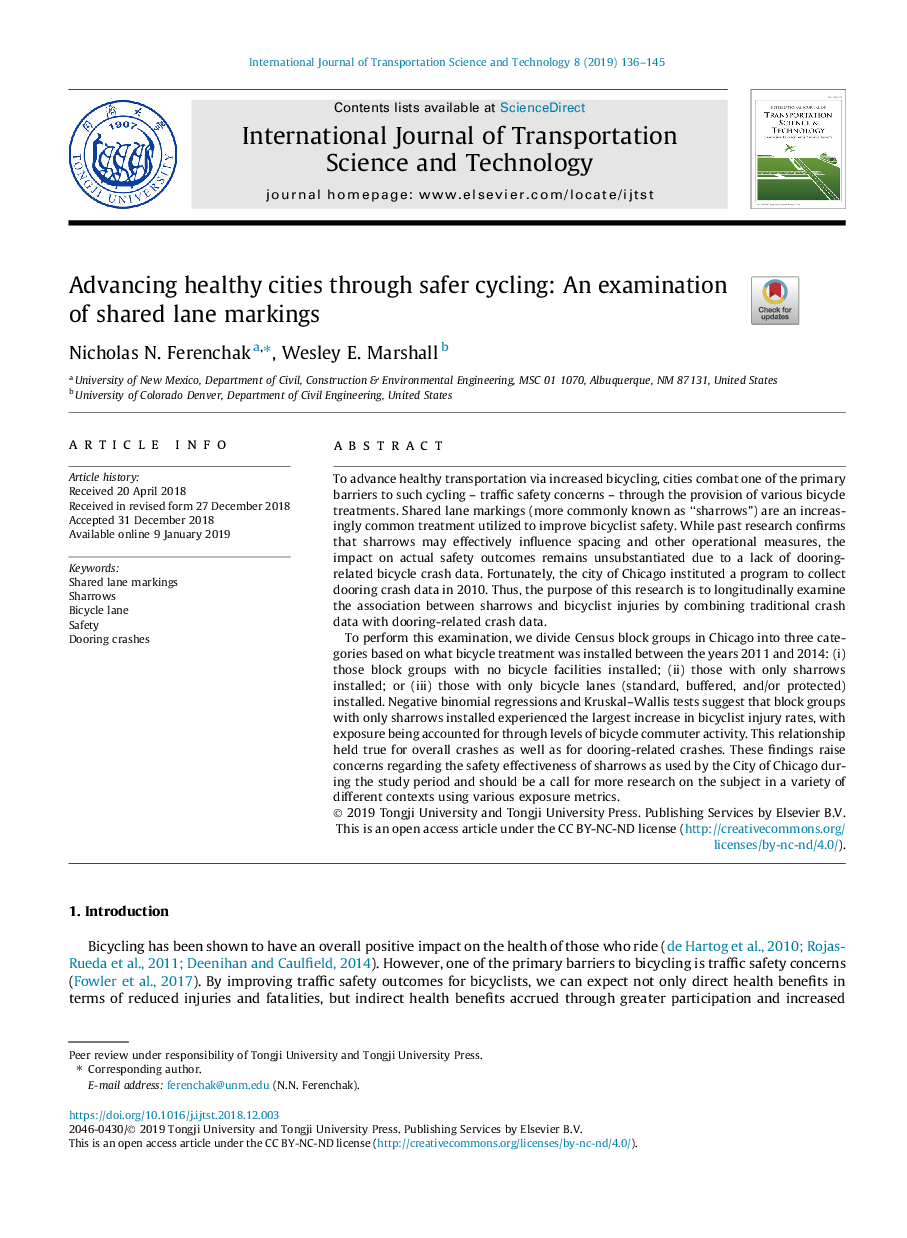| Article ID | Journal | Published Year | Pages | File Type |
|---|---|---|---|---|
| 13421296 | International Journal of Transportation Science and Technology | 2019 | 10 Pages |
Abstract
To perform this examination, we divide Census block groups in Chicago into three categories based on what bicycle treatment was installed between the years 2011 and 2014: (i) those block groups with no bicycle facilities installed; (ii) those with only sharrows installed; or (iii) those with only bicycle lanes (standard, buffered, and/or protected) installed. Negative binomial regressions and Kruskal-Wallis tests suggest that block groups with only sharrows installed experienced the largest increase in bicyclist injury rates, with exposure being accounted for through levels of bicycle commuter activity. This relationship held true for overall crashes as well as for dooring-related crashes. These findings raise concerns regarding the safety effectiveness of sharrows as used by the City of Chicago during the study period and should be a call for more research on the subject in a variety of different contexts using various exposure metrics.
Keywords
Related Topics
Physical Sciences and Engineering
Engineering
Civil and Structural Engineering
Authors
Nicholas N. Ferenchak, Wesley E. Marshall,
